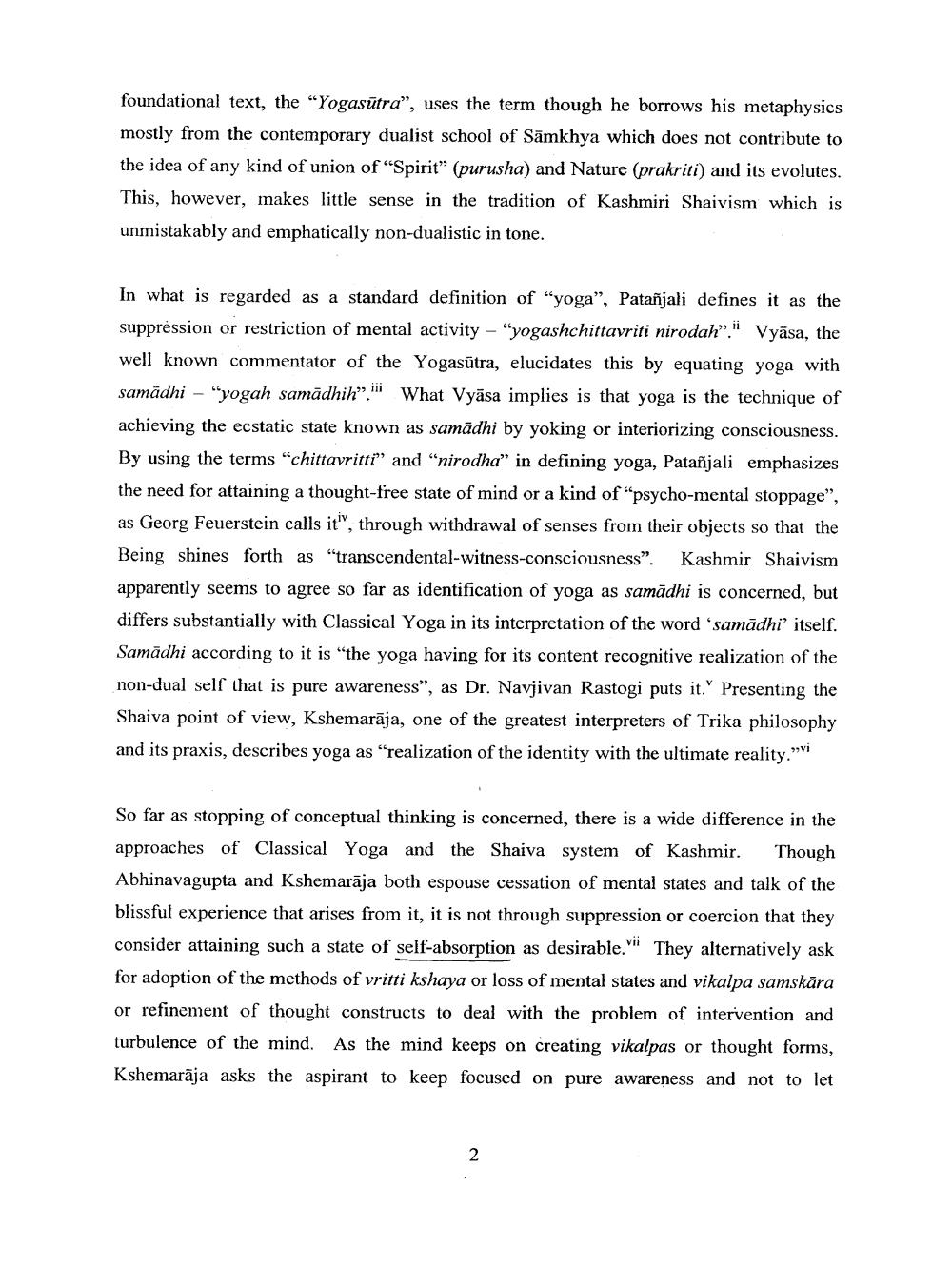Book Title: Yoga of Synthesis in Kashmir Shaivam Author(s): S S Toshkhani Publisher: S S Toshkhani View full book textPage 2
________________ foundational text, the "Yogasütra", uses the term though he borrows his metaphysics mostly from the contemporary dualist school of Sämkhya which does not contribute to the idea of any kind of union of "Spirit" (purusha) and Nature (prakriti) and its evolutes. This, however, makes little sense in the tradition of Kashmiri Shaivism which is unmistakably and emphatically non-dualistic in tone. In what is regarded as a standard definition of "yoga", Patanjali defines it as the suppression or restriction of mental activity "yogashchittavriti nirodah"." Vyasa, the well known commentator of the Yogasūtra, elucidates this by equating yoga with samadhi - "yogah samadhih". What Vyasa implies is that yoga is the technique of achieving the ecstatic state known as samadhi by yoking or interiorizing consciousness. By using the terms "chittavritti" and "nirodha" in defining yoga, Patanjali emphasizes the need for attaining a thought-free state of mind or a kind of "psycho-mental stoppage", as Georg Feuerstein calls it, through withdrawal of senses from their objects so that the Being shines forth as "transcendental-witness-consciousness". Kashmir Shaivism apparently seems to agree so far as identification of yoga as samadhi is concerned, but differs substantially with Classical Yoga in its interpretation of the word 'samadhi' itself. Samadhi according to it is "the yoga having for its content recognitive realization of the non-dual self that is pure awareness", as Dr. Navjivan Rastogi puts it." Presenting the Shaiva point of view, Kshemaräja, one of the greatest interpreters of Trika philosophy and its praxis, describes yoga as "realization of the identity with the ultimate reality." So far as stopping of conceptual thinking is concerned, there is a wide difference in the approaches of Classical Yoga and the Shaiva system of Kashmir. Though Abhinavagupta and Kshemaraja both espouse cessation of mental states and talk of the blissful experience that arises from it, it is not through suppression or coercion that they consider attaining such a state of self-absorption as desirable. They alternatively ask for adoption of the methods of vritti kshaya or loss of mental states and vikalpa samskāra or refinement of thought constructs to deal with the problem of intervention and turbulence of the mind. As the mind keeps on creating vikalpas or thought forms, Kshemarāja asks the aspirant to keep focused on pure awareness and not to let 2Page Navigation
1 2 3 4 5 6 7 8 9 10 11 12 13 14 15 16 17 18 19 20 21 22 ... 46
